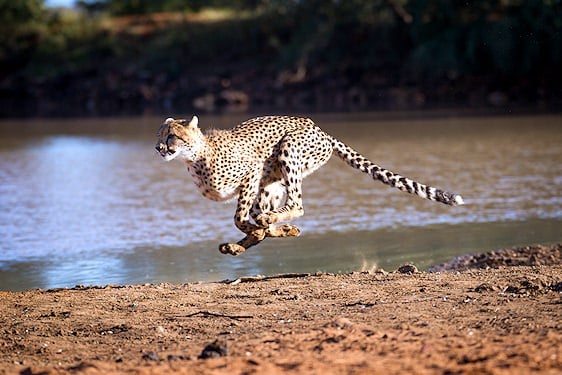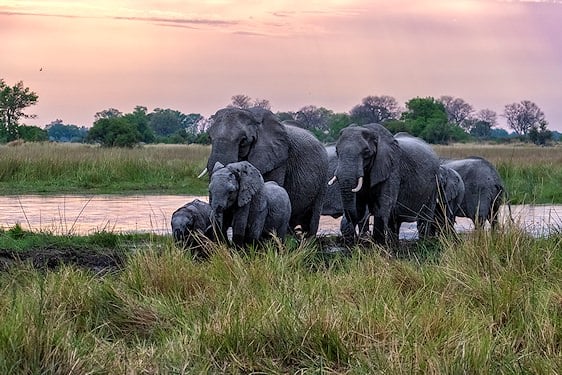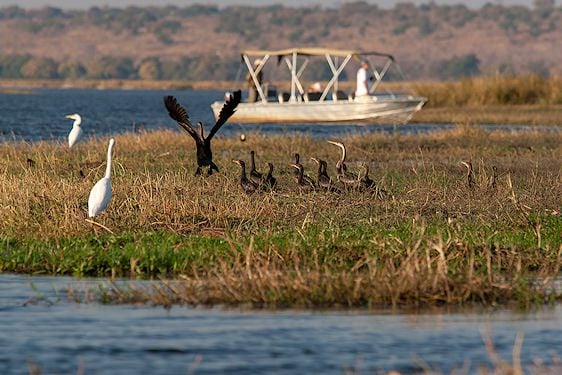- Home
- >
- African Travel
- >
- South Africa
- >
- National Parks
- >
- Kruger National Park
- >
- Mammals
- >
- Spotted Hyena
Description
Spotted hyena show a light, dull brown coat marked with darker spots that aid camouflage in long savanna grass. Built powerfully with sloping shoulders and crushing jaws, hyena are among Africa’s most capable predators and scavengers. They adapt readily to varied habitats and human presence, thriving near protected reserves and along travel corridors where prey and carrion remain available year-round.

Spotted hyena occur widely across Sub-Saharan Africa, with notable gaps in the deepest Congo rainforest, much of the West African coast, and scattered parts of Namibia and Zimbabwe. In South Africa they are largely absent from the Cape provinces and most mainland areas, persisting primarily in the north within national parks and adjoining reserves, where stable prey, limited persecution, and denning sites support resilient clan territories.

Status
Spotted hyena function as primary scavenger on African plains alongside vulture and jackal, yet many clan hunt effectively when opportunity arises. The species remains widespread and not currently at imminent risk, though local declines occur where habitat is lost and poaching persists. Broad distribution across elevations generally below about 4,100 meters reduces extinction risk, and Kruger National Park offers reliable viewing on dawn and dusk drives.

Habitat
Spotted hyena anchor many classic grassland dramas, moving between open plains, savanna, and mixed woodland where prey is abundant. They den in burrows, termitaria, or rocky ground and travel widely along habitual paths between water, carcasses, and hunting areas. Although opportunistic, hyena often avoid direct conflict with apex competitor and exploit carcasses or isolated prey, consuming bone and hide with remarkable efficiency.

Social Organization
Spotted hyena form large clans dominated by a matriarch, with strict rank shaping access to food and den space. Female are typically larger and more dominant than male, and related female often inherit rank. Clans maintain territories around communal dens and shift when pressure from rival clans or prey movement demands. Social bonds, ritual greetings, and coordinated foraging underpin flexible responses to changing resources.
Finest Safari Areas in Africa for Encountering Spotted Hyena
We recommend the following National Parks and Private Reserves for the best chances of spotting the spotted hyena on safari game drives and bush walks.

Social Behavior
Spotted hyena defend territories using scent marking through pasting and dung deposits along paths and borders. Rival clans frequently test boundaries, and disputes over carcasses can escalate rapidly. Clan members exchange ritual greetings by sniffing the underside and tail base. Over distance, the iconic whoop carries information about identity and number, coordinating movement and asserting presence during nighttime foraging.

Reproduction
Spotted hyena breed year-round, with female entering estrus for roughly two weeks and first reproducing near three years of age. Courtship is brief and shaped by rank; higher-ranking female secure better resources and pup survival. After about 110–140 days of gestation, most litters contain one to four pups, commonly two, which nurse at secure dens and develop hunting skills within their extended clan network.

Anti-Predator Behavior
While adult spotted hyena face few predators, competition with lion at kills can be intense and dangerous. To counter larger rivals, clan employ coordinated mobbing, testing resolve with approach-withdraw tactics. Hyena frequently displace solitary leopard or cheetah from carcasses, especially in dry seasons, but yield to concentrated pressure from cohesive lion groups, retreating to reassemble and search for alternative opportunities.












